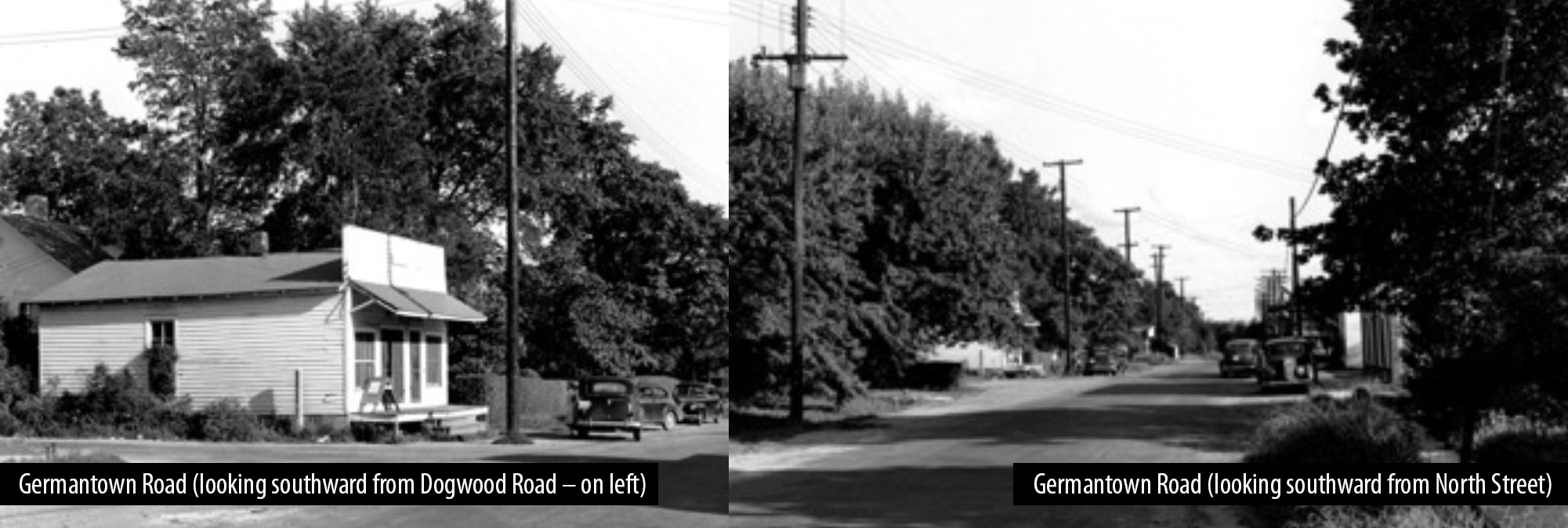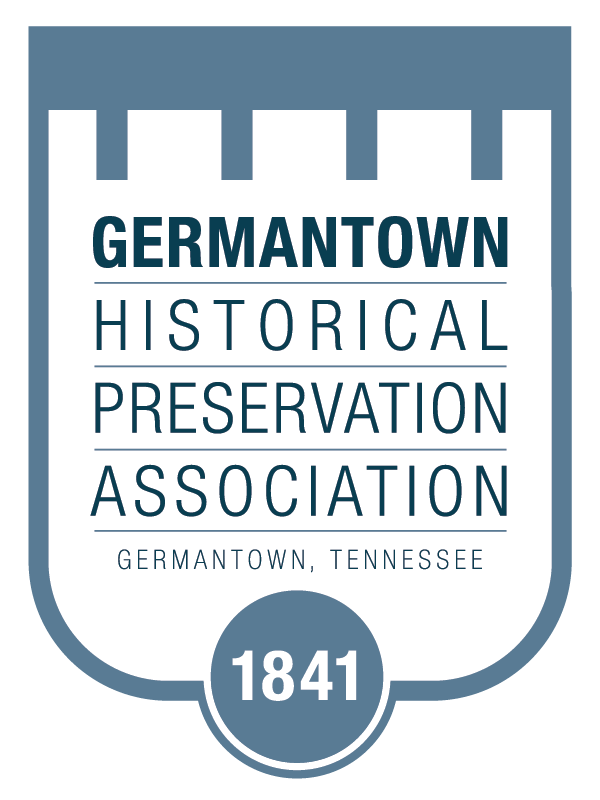
Early Traffic
By Andy Pouncey
For most who have repetitiously traveled Poplar Avenue, it appears that it has always been there.
In the ’50s and even the ’60s, people traveling eastward to Germantown, from Memphis, and coming upon Ridgeway, would veer to the south near Memphis University School (MUS), cross the railroad at grade, and continue eastward to Germantown. Today you can find a sign in front of MUS that states, from this point west this road, is Park Avenue, and to the east, this road is Poplar Pike.
Poplar Pike in the ’30s was carefully watched over by the Poplar Pike Improvement Association, from to signage to commercial uses, from White Station to Collierville. Poplar (State Highway 72), as we know it today, did not exist until 1937.
In 1956 the volumes of traffic carried by Poplar Avenue were very low. Highway Patrolman Stuart Dean recommended that the City not install a stoplight at its intersection with Germantown Road until more homes are built.
Next year, the City suggested placing a warning light at the beginning of a 30-mph zone on Hwy. 72. The zones were located at Pete Mitchell Road to the east and Germantown Heights Subdivision at Willey Road on the west. The motion to approve MLGW placing the blinking lights at these two locations came at a cost of $412, but not until 1967. The light at Willey Road was removed in 2006.
A year later in 1958, Boyd Arthur got a firm bid ($2200) from MLGW on a stoplight at Poplar and Germantown Road. It took until 1960 for the Board of Mayor and Aldermen (BMA) to approve an automatic, trip stoplight there costing $2,873. Today, signalizing an intersection can cost up to $200,000.
By 1959 traffic volumes had picked up to the point that the BMA went on record favoring the widening of Poplar Avenue to four (4) lanes from Memphis to Collierville. They waited until 1963 to write the Tennessee Highway Department recommending that additional lanes be constructed for Poplar, at its present location, to make a four-lane highway. In 1965 the City accepted the right-of-way agreement with the State of Tennessee Highway Department in connection with this widening through the City.
By 1962 traffic was increasing to the point that motion was approved to install “yield-right-of-way, turn right anytime” signs on Germantown Road, turning onto Poplar Avenue. The population had doubled from 920 in 1955 to 1,845 in 1965. An increase in population even pushed forward the installation of a two-line, push button, hold control telephone in City Hall.
And we shouldn’t forget how fire trucks crossed Poplar Avenue north to south. Early on, Edgar McHenry, a local businessman, would receive a call from the Volunteer Fire Department and hustle to the intersection of Poplar and Germantown so he could flag down the traffic going east and west, allowing the north-south traffic to flow unimpeded.
This growth came to me all to clearly last week at the Germantown Community Theatre (GCT) on Forest Hill-Irene Road. In practice for the play “Germantown Stories” (March 30- April 1), highlighting perspectives of our City through time, we attempted to recreate with people, movements through the intersection of Poplar and Germantown Road. Please, just work with me here.
We began, one person at a time, moving slowly through the intersection, observing the stop sign and waving to friends on the street or in cars. Then the traffic light came, played by 8-year old Andrew. We could still delineate our neighbors, raising one hand off the wheel to waive.
Eventually we had such numbers stopping (or not), and the GCT’s stage became extremely busy. We had to focus on our movements with two hands and there were a few scraped shins. Now we have more lanes, more traffic, more attitudes, changing street names, and 40,977 citizens. With Smart Growth we are talking about the amazing movement of joining Germantown Road to Germantown Road to facilitate traffic and invite pedestrians back to the street. What will these planners come up with next! Shaaaazam!
My question is, with all this traffic, how does grass continue to grow all summer on the manhole in the middle of the intersection. In all this Mother Nature plays her role.
In 1972 Bruce Law was Mayor and the City’s population was approximately 5,000.
Robin Wood had The Book Cottage in an area called The Pines (approximate site of the current Medical Office Building between Poplar Avenue and Methodist Hospital). In The Pines was the former estate home of Maude Cauthorn and later Dr. William F. Bowld of Bowld Hospital in Memphis. She also partnered with Nancy Grider of The Checkerberry for 18 years. At one time, Nancy also had a partner named Mary Glynne Massey. Phil Maybee had an antique store in a log cabin on the southeast corner of Poplar Avenue and Germantown Road; and Ray Dickey was a realtor.
What did all these people have in common? In 1972, they, as business people, along with several clubs, saw the need to attract people to Germantown. They created the Germantown Festival Committee. In 1983, the charter was surrendered and a new corporation was proposed titled Germantown Association, Inc. Bill Watkins helped with the financial structure and the late Owen Batchelor with the legal structure. A Festival Committee was formed with Bobby Lanier, Thane Smith, and George Walters as charter members.
Originally, the Germantown Festival was divided into three areas. Germantown Road was closed from Poplar Avenue to Oaklawn Gardens on Poplar Pike. The northernmost area had arts and crafts in the area of The Pines. The area was fenced from the street and given the flavor of a Renaissance Fair, a medieval atmosphere. Even Germantown Square Mall across Poplar from the Pines had arts and crafts. The second area was Germantown Road between Poplar and Poplar Pike. There were country arts and crafts along with entertainment. Craftsmen paid a fee to participate, but there were no scholarships on behalf of the Festival. Each club used its own proceeds to support their own specific cause.
The women realtors sold sausage and biscuits in front of the building at North Street, currently occupied by Franklin Antiques. The Baptist Church provided an old-fashioned service in period dress. There were the Suzuki players and the knotwurst makers.
I found it appropriate that the production showing at The Germantown Theatre in St. George’s Chapel during the 1979 Festival, was “Damn Yankees”. In 1862, they burned most of the buildings along that street. Rugby was offered in C.O. Franklin Park, while the U.S. Polo Association was playing the Copper Cup Tournament on the Polo Grounds, south on Germantown Road. The newspaper noted that public restrooms were available at the back of the Century 21 building.
Area three was C.O. Franklin Park on Poplar Pike. One year before, The Heritage Woman’s Club of Germantown had a “Flea market” there, the benefits of which supported the Germantown Community Center. This third area in 1972 became part of the Festival, and the Heritage Woman’s Club has occupied a space near the Pickering
Center ever since that time. The wonderful work that they have contributed to the City as a result of their sales is an article unto itself.
Later, the Festival would become such a hit that it had to be centrally located in an area that could hold the large numbers of visitors. All portions of the Festival moved to C.O. Franklin Park on Poplar Pike and general scholarships from the proceeds were presented on behalf of the Germantown Festival Committee.
Today, attendance is estimated at 55,000 to 65,000. The event over the last several years has been run by Melba Fristick (13 years) and the late Jim Arnold. Give Melba and her volunteers a big thank you for all the work they do.
One of the more popular events on Sunday is the ‘Running of the Weenies’ dachshund race in the Charity Horse Show Arena. The “Weenie Race” was begun years ago by the Germantown Animal Commission.
So how popular is this Festival? One couple called Melba recently to confirm the day of the race to ensure that the date of their honeymoon would still allow them to be present for the race. Dare I say that their marriage is going to the dogs?
